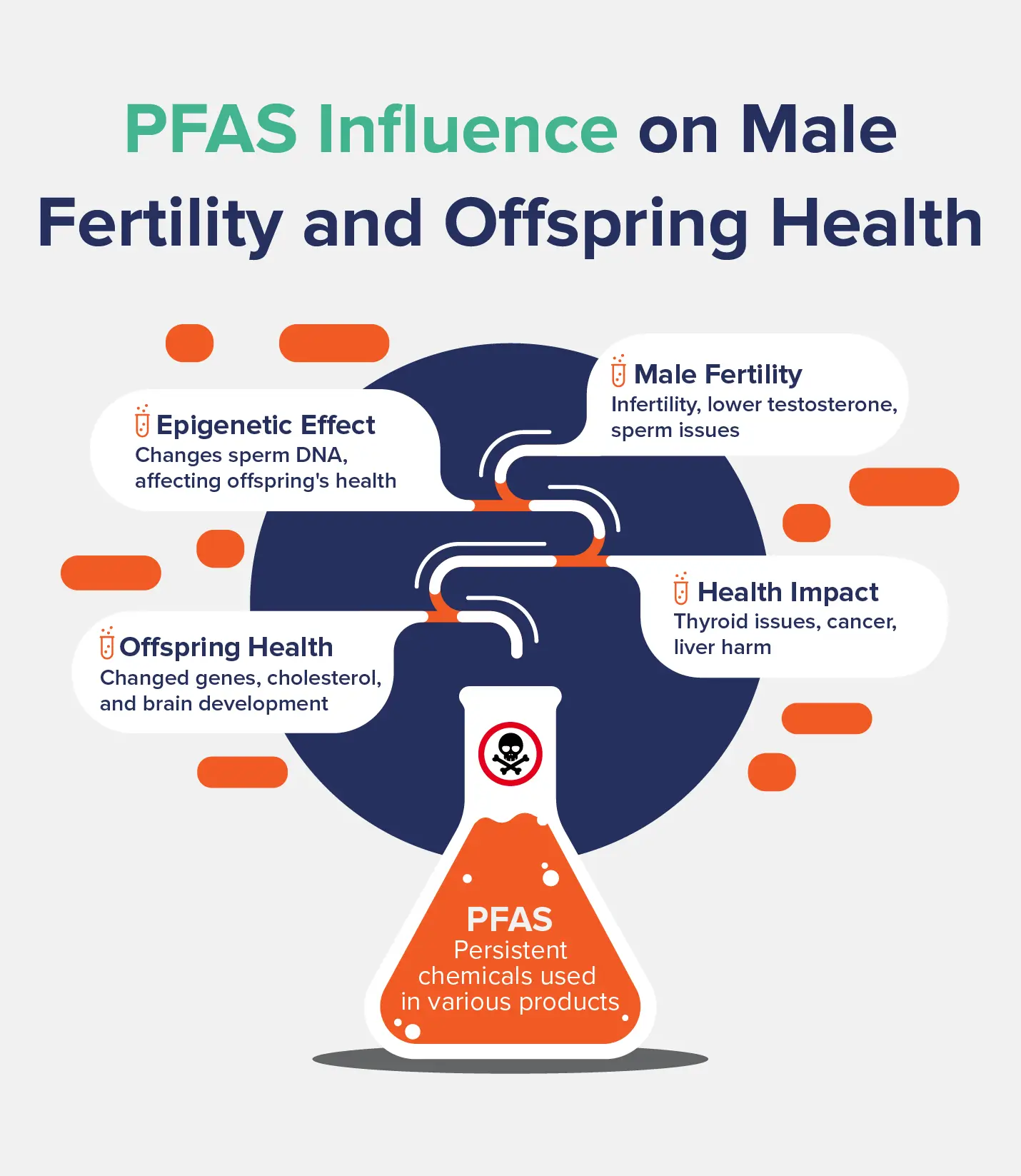Save $40 on your initial consult with a TNI Dietitian!
Talk to a real Dietitian for only $99: Schedule Now
This post contains links through which we may earn a small commission should you make a purchase from a brand. This in no way affects our ability to objectively critique the products and brands we review.
Evidence Based Research To fulfill our commitment to bringing our audience accurate and insightful content, our expert writers and medical reviewers rely on carefully curated research.
Read Our Editorial Policy
PFAS are a group of thousands of chemicals known to persist in the environment and the human body, earning them the nickname “forever chemicals.”
Also known as per- and poly-fluoroalkyl substances (we’ll stick to calling them PFAS), these manufactured chemicals have been widely used in various industries for decades.
However, they are becoming increasingly prevalent in our day-to-day lives because they bioaccumulate and are very slow to degrade.
While not all chemicals are harmful, research is emerging about how the increase in PFAS in our environment and bodies can affect our health, ranging from pregnancy outcomes and fertility to thyroid disease and some cancers.1
A recent study published in Environment International by researchers from Wayne State University in Michigan have found that PFAS also impact male reproduction—including negatively impacting their offspring’s health.2
PFAS have been used since the 1940s to repel water and resist heat, grease, and stains. For these reasons, products like non-stick cookware, stain-resistant fabrics, firefighting foams, and certain food packaging materials use PFAS.
While one-time exposure to these chemicals isn’t world ending, the problem is that they persist in the environment and our bodies. They don’t break down easily and can accumulate in water, air, animals, and humans. PFAS enter and persist in water systems because of industrial discharge, landfill runoff, and PFAS-containing firefighting foams.
Previous studies have shown that elevated PFAS exposure is linked to worsened female fertility and reproductive health.3 One reason for declining fertility in both males and females may be the increase in endocrine-disrupting chemicals such as PFAS. Endocrine-disrupting chemicals can interfere with normal hormone production, primarily affecting reproductive and thyroid hormones.
Other potential health issues from elevated PFAS exposure include developmental effects in fetuses and infants, cancer, liver damage, and immune system changes.4
In this recent animal study, researchers demonstrated a link between exposure to PFAS in male mice and health issues in their offspring.2
They looked at the effect of PFAS on the sperm methylome (DNA methylation changes to sperm) in male mice, as well as transcriptional changes (variations in how DNA is copied into RNA) in the metabolic tissues of their offspring after exposure.
In mice exposed to PFAS in their drinking water for 18 weeks, significant changes to sperm DNA methylation were seen, which is implicated in infertility and abnormal male sperm parameters. A potential mechanism behind this link is that PFAS exposure reduces testosterone levels and inhibits sperm cell production and maturation.5
The researchers also confirmed that PFAS accumulates in testicular tissue. This raises concerns about how PFAS could influence epigenetic patterns and affect offspring by altering the process of sperm development and maturation.
The research verified: the mice dads exposed to PFAS also had offspring that showed adverse health effects.
These offspring had significantly different gene expression in the liver, including changes to cholesterol metabolism. The male mice’s babies’ cholesterol levels were higher in the PFAS-exposed fathers compared to controls. Interestingly, female offspring were not affected.
Lastly, gene expression related to neurodevelopment and lipid metabolism changed in the offspring of PFAS-exposed male mice.

Now that research is revealing the adverse health effects of PFAS exposure to both men and women, minimizing exposure is more important than ever.
Here are some top ways to minimize PFAS exposure: